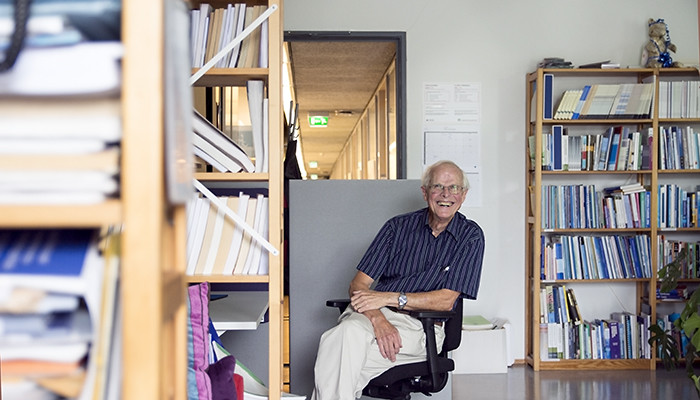Scientific journals are interested in a good story well told, too
International scientific publications are flooded with manuscripts. We asked Gustaf Olsson – professor emeritus and member of several editorial boards – what makes an article stand out.

”If your article gets rejected, remember that you are in majority”, says professor emeritus Gustaf Olsson from Lund University, Sweden.
Olsson has overseen the publication of hundreds of scientific articles. In addition to his duties as a professor in the field of electrical engineering and automation, Olsson has served as an editor for Water Science & Technology and four other scientific journals. He has also educated researchers in the field of technology around the world about scientific publishing.
In August, Olsson visited Aalto University to hold a four-day workshop for more than 20 international doctoral students in the field of water issues. The workshop focused on refining students’ manuscripts into articles ready for publication.
The professor emeritus has witnessed the growth in the volume of scientific publications firsthand. Journals may receive thousands of submissions every year, and the rate is still climbing.
“Publish or perish culture has spread. I’m worried about that development. Researches don’t dare to be innovative.”
Scientific journals are interested in research that produces new knowledge or explores new viewpoints. Even a good study may end up at the bottom of the pile if its message is not effectively communicated to the reviewer.
Aalto University's Water and Environmental Engineering research group organised a scientific publishing workshop with International Water Association's Young Water Professionals in August.
”Standing out from the crowd is becoming ever tougher, and thus more care must be given to writing your article”, Olsson says.
“If the article hasn’t caught my attention after reading the abstract, introduction and conclusion, it is probably not worthwhile to review.”
Often a manuscript will be sent back to its author because it does not fit the publication it was offered to. Olsson implores authors to look through earlier issues of a journal in order to assess whether a piece of research will interest that specific journal’s audience.
How can a starting researcher become a better writer?
”Practice, practice and practice. You should read good scientific articles, but also read good literature. Learn to communicate about what you do with those who are not your colleagues, as it will also help you understand your own work better. Try, for example, explaining your research to a primary school student!”
Gustaf Olsson’s five pointers for better scientific writing
- Give your text a clear message
Start by identifying the central message of your study. Summarise your research in two or three sentences that outline what you have done and why. A clear vision will help the writing process along while also making it easier for you to present your study at a later date.
“As a reviewer, I am drawn to the story of the article – why has it been made and what problem does it seek to solve?”, says Olsson.
- Put yourself in the reader’s shoes
Before you start, think of who you are writing for and how your message is communicated. Are you writing for experts in your own field, a multidisciplinary audience or perhaps the general public? Your target audience should impact the style of the entire text.
- Attract the reader’s curiosity from the beginning
The title of your study is a sales pitch aimed at bringing readers to your text. A good title also includes the central message of your study. Try to keep titles simple and brief but also informative. Readers will often make a decision on whether to read the full text by the end of the introduction. Do not hide your most important message at the end of the text!
"Show your text to your mother or a friend. Can they understand the title and why the study has been conducted?"
- Discussion is the heart of the article
A good article will clearly show the methods and results of the study, but the discussion truly makes the article scientific. In the discussion section you have the opportunity to demonstrate that you understand the results of your research and how those results connect to a wider context within the field. Do not settle for showing data – explain it.
"Do not be afraid of telling that the results were surprising or unexpected. Just be sure to explain why!", Olsson says.
- A picture may be worth a thousand words
Figures may be better than words at explaining results, but they must be equally legible. Unclear diagrams or figures expressed with non-credible precision are common reasons for articles being sent back for revision. Diagrams may also be misleading – for example, red is often interpreted as bad and green as good. Make sure, that your figure or table is understandable as it is. Also, consider whether it is suited for small-size or black-and-white printing.

